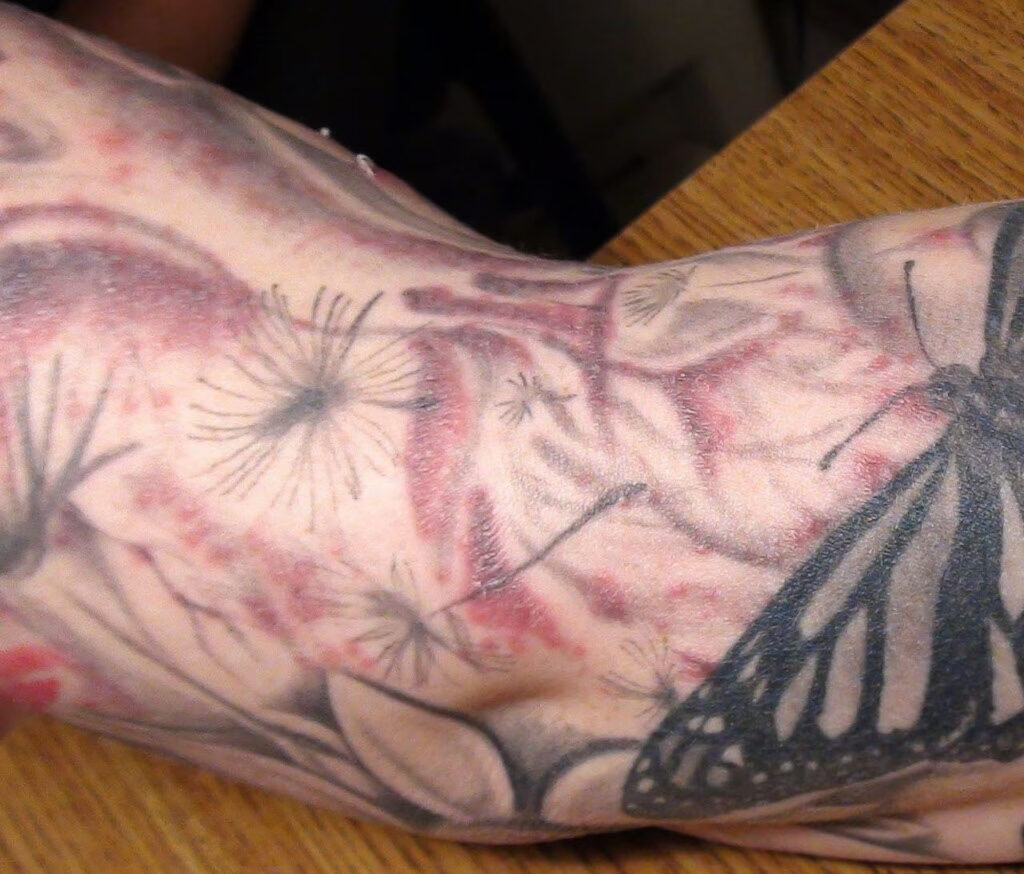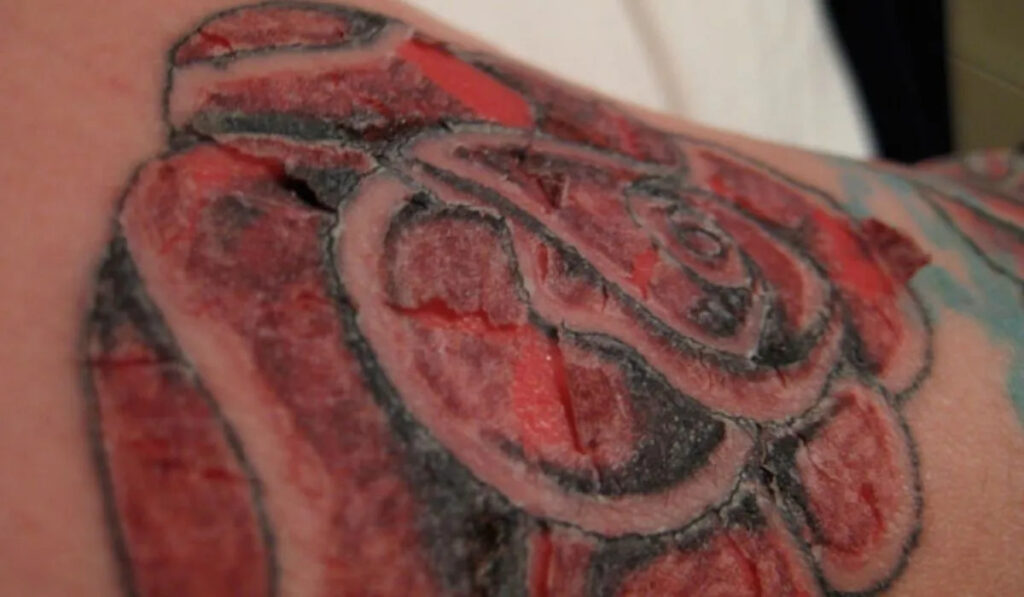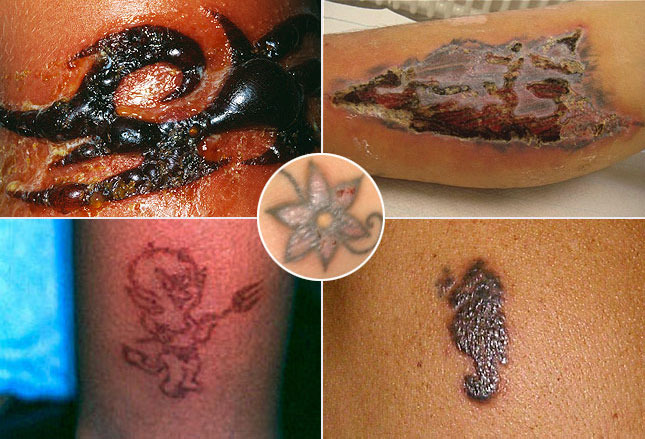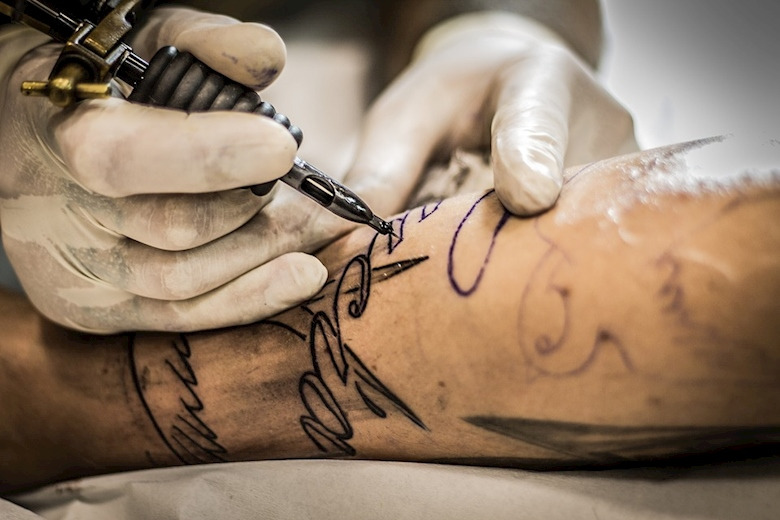
Ink is essential for communication, artistic expression, and documentation. From writing instruments to tattoos and printing, ink plays a significant role in society. However, amidst the beauty and functionality of ink, there lies a potential danger that often goes unnoticed: ink poisoning.
This post’llPublic Awareness and Education Initiatives discuss ink poisoning’s causes, symptoms, and long-term repercussions. We will explore the different types of ink poisoning, including those stemming from writing instruments, tattoos, and printer ink. Understanding the symptoms associated with ink poisoning will enable us to recognize and respond to potential cases. Furthermore, we will examine the risk factors and vulnerable populations, discuss treatment options, and prevention strategies, and debunk common myths surrounding ink poisoning.
Join us as we uncover the truth about ink poisoning, aiming to raise awareness and promote ink safety in our everyday lives.
Understanding Ink Poisoning

Ink poisoning is a condition that occurs when harmful substances present in certain types of ink enter the body through various means. While ink poisoning is relatively rare, it is crucial to understand its causes, effects, and preventive measures to ensure our safety.
There are several common sources of ink poisoning. Ink from writing instruments like pens and markers can be risky if ingested or if it comes into contact with open wounds or mucous membranes. Tattoo ink, which contains a mixture of pigments and additives, can also lead to ink poisoning if contaminated or if the body reacts negatively to the ink. Printer ink used in homes and offices might release volatile organic compounds (VOCs) that irritate the lungs. Ink cartridges and refills, containing ink for printers, can also be potential sources of ink poisoning if mishandled or accidentally consumed.
Depending on the ink and exposure route, ink poisoning symptoms differ. Vomiting, headaches, dizziness, and stomach pain are symptoms. Skin contact causes rashes, inflammation, and edema. Coughing, wheezing, and difficulty breathing might result from inhaling ink particles or VOCs. Swallowing ink may cause diarrhea and other stomach issues.
Several factors contribute to the risk of ink poisoning. Exploring and putting things in their mouths makes children, especially small ones, more vulnerable. Ink exposure may cause more severe reactions in people with allergies or respiratory issues. Tattoo artists and printers may be at danger of ink poisoning due to their frequent ink exposure.
Preventing ink poisoning involves practicing safe handling and storage of ink-containing products. This includes keeping writing instruments out of reach of children, using gloves and ensuring proper ventilation when handling tattoo ink, and following safety guidelines for printer ink usage. Educating oneself about potential risks and understanding the ingredients in different types of ink can also contribute to prevention.
People may make informed judgments and protect their health by understanding ink poisoning’s causes, symptoms, and prevention. In order to reduce ink poisoning hazards in daily life, ink safety and knowledge must be prioritized.
Types of Ink Poisoning

Ink poisoning can occur through various sources, each posing its own unique risks and consequences. Understanding the different types of ink poisoning is crucial for identifying potential hazards and taking appropriate precautions.
Ink poisoning from writing instruments
Ingestion or contact with open wounds or mucous membranes can cause ink poisoning from pens and markers. Accidental intake, especially by youngsters, causes hurt. Ink entering the bloodstream through cuts or wounds can also introduce poisons.
Ink poisoning from tattoos
Tattoos involve injecting ink into the skin’s dermal layer, making them another potential source of ink poisoning. Although rare, contaminated tattoo ink or adverse reactions to the ink’s components can cause health issues. Allergies or infections resulting from the tattooing process can manifest as symptoms of ink poisoning.
Ink poisoning from printer ink
Printer ink releases volatile organic compounds (VOCs) into the air. Inhaling substantial amounts of these VOCs over time can cause respiratory issues and ink poisoning. Long hours in inadequately ventilated environments with printer ink exposure can be dangerous.
Ink poisoning from ink cartridges and refills
Ink cartridges and refills used in printers can also pose a risk of ink poisoning if mishandled or accidentally consumed. Ingesting ink from these sources or improper handlings, such as spilling ink on the skin or eyes, can result in adverse health effects. It is crucial to follow proper storage and handling procedures to minimize the risk of ink poisoning.
Recognizing the various types of ink poisoning allows individuals to be aware of the potential dangers associated with each source. By understanding the risks and taking necessary precautions, such as practicing safe handling and storage, we can mitigate the chances of ink poisoning and safeguard our well-being.
What Are Ink Poisoning Symptoms?

Ink poisoning symptoms can resemble allergy reactions but are usually worse.
Some common symptoms include:
- Vomiting or feeling nauseous
- Excessive swelling around and beyond the tattooed area
- Joint pain or body aches
- Swollen lymph nodes
- Persistent headaches or migraines
- Fever, sweating, shaking, or experiencing chills
- Severe irritation in the tattooed area, which delays the healing process
- Oozing, blistering, or excessive bleeding
Certain tattoo ink pigments are more likely to induce allergic responses, according to the Mayo Clinic. Note that an allergic reaction is not ink poisoning. Ink poisoning is a more severe condition that often requires intensive medical treatment or even tattoo removal. An allergic reaction can typically be managed topically.
Red, yellow, blue, and green inks may trigger allergic responses. While many people get colored tattoos without any issues, it’s worth mentioning that each ink brand formulates its inks differently. These specific colors also tend to have a higher likelihood of containing contaminants in their ingredient lists. “The Best Tattoo Ink Brands in the Industry – Our Complete Review Guide” covers recognized tattoo ink brands.
Risk Factors and Vulnerable Populations
Certain factors can increase the risk of ink poisoning, while specific populations may be more susceptible to its effects. Recognizing these risk factors and vulnerable populations is crucial for understanding who may be at higher risk and implementing appropriate preventive measures.
Age-related risks
Age plays a significant role in the vulnerability to ink poisoning. Young children, particularly toddlers, and infants, are more prone to accidental ingestion of ink or putting ink-containing objects in their mouths. Their curiosity and lack of understanding regarding potential dangers make them more susceptible to ink poisoning. It is essential to keep writing instruments and other ink-related items out of their reach and provide close supervision to minimize the risk.
Pre-existing medical conditions
Ink poisoning may be especially dangerous for people with specific medical conditions. Allergies, asthma, impaired immune systems, and respiratory difficulties can worsen symptoms or increase the risk of consequences. People with these medical conditions should take extra precautions when handling or being exposed to ink-containing products to avoid potential health risks.
Occupational hazards
Certain occupations involve frequent exposure to ink, increasing the risk of ink poisoning. Tattoo artists, for instance, constantly handle tattoo ink and may be at a higher risk of adverse reactions or infections. Similarly, workers in the printing industry who handle large quantities of ink or work in poorly ventilated environments may face increased exposure to VOCs and ink particles. Proper safety protocols, such as wearing protective equipment, ensuring good ventilation, and practicing safe handling techniques, are essential for individuals in these occupations to mitigate the risks associated with ink poisoning.
Understanding the risk factors and vulnerable populations associated with ink poisoning allows for targeted preventive measures and better protection. By considering age-related risks, pre-existing medical conditions, and occupational hazards, individuals can take appropriate precautions to minimize the chances of ink poisoning and ensure their well-being.
Treatment and First Aid for Ink Poisoning

When confronted with a potential case of ink poisoning, prompt and appropriate actions are crucial to minimize the risks and ensure the well-being of the affected individual. Understanding the necessary steps for treatment and administering first aid can make a significant difference in managing ink poisoning incidents.
Immediate steps to take
Call 911: If the person has serious symptoms, trouble breathing, a severe allergic response, or ingests a lot of ink, call 911 immediately.
Remove from exposure: If the ink is still present on the skin, remove any contaminated clothing or accessories and rinse the affected area with lukewarm water.
Ingestion: If ink has been ingested, do not induce vomiting unless instructed to do so by medical professionals. It is best to seek immediate medical advice.
Home remedies and self-care
Drink plenty of water: In cases of mild ink poisoning, staying hydrated can help flush the toxins out of the system. Encourage the affected person to drink water unless otherwise advised by a medical professional.
Cleanse the affected area: Ink on the skin should be washed with gentle soap and water. Avoid using harsh chemicals or scrubbing vigorously, as this can further irritate the skin.
Monitor for symptoms: Keep a watch out for symptoms worsening or changing. If symptoms increase, visit a doctor.
Medical treatment options
Professional assessment: Medical professionals will evaluate the severity of the ink poisoning, consider the route of exposure, and assess the individual’s overall health condition.
Supportive care: Depending on the symptoms and severity, medical professionals may provide supportive treatments such as medications to alleviate nausea, antihistamines for allergic reactions, or respiratory support for severe respiratory symptoms.
Decontamination: Medical practitioners may decontaminate the body after ingesting or inhalation to remove ink particles or poisons.
It is crucial to note that treatment and first aid for ink poisoning should be administered by trained medical professionals. If you suspect ink poisoning or encounter severe symptoms, it is recommended to seek immediate medical assistance or contact a poison control center for professional guidance.
By knowing the immediate steps to take, understanding self-care measures, and seeking appropriate medical attention, individuals can ensure a prompt response and proper management of ink poisoning incidents.
What to Do if You Think You Have Tattoo Ink Poisoning

Ink poisoning or tattoo allergies require prompt medical attention. It takes a doctor to fix this. Avoid risking treatment delays, which can be life-threatening.
Contact a doctor immediately. They can advise and treat you. Ink poisoning or tattoo ink allergies should not be ignored or self-treated.
Contact your tattoo shop as well as a doctor. Ask them about the ink brand, color, serial number, and lot number. This information is needed to report the incident to the FDA and should be shared with your poisoning doctors. You can prevent future ink poisoning by alerting the tattoo business. Ask them to save the ink for lab testing.
After a good diagnosis, a doctor will create a customized treatment plan. Resting, applying topical creams, and taking medications to treat infections may be necessary. Medical specialists may recommend laser tattoo removal in extreme cases.
In ink poisoning or tattoo allergies, your health must come first. Follow medical advice and let them guide you through treatment.
Is it Poisoning or an Allergic Reaction?
Ink poisoning and allergic reactions to tattoos must be distinguished. Before getting a tattoo, get tested for tattoo ink allergies. A Q-tip applies a small bit of each ink color to your arm during the test. Ink allergies usually appear within minutes. Unfortunately, many miss this easy test and are ignorant of the potential effects. Tattoos may irritate fragile skin. Severe responses are infrequent. In addition, a moderate to severe ink allergy may cause the skin to reject the ink, leaving the tattoo colorless.
Writing, printer, and tattoo ink poisoning have different symptoms. Writing or printer ink can cause nausea and vomiting. Swallowing printer ink causes headaches and nervous system harm. Swelling, discomfort, and rashes are often mistaken for tattoo ink poisoning.
Writing ink is bottled ink. None of the ingredients are hazardous, hence it’s non-toxic. Writing ink poisoning is unusual because it takes over an ounce to create issues. Printer ink has more hazardous chemicals than writing ink. The lack of ingredient regulation makes tattoo ink toxicity more likely.
Writing ink poisoning is rare, however over an ounce can cause nausea. Vomiting from severe nausea may discharge the ink. Ink consumption also causes mouth discoloration. This form of poisoning rarely kills, but medical assistance is needed.
If you fear ink poisoning or have severe tattoo symptoms, see a doctor. They can give you tailored advice and therapy.
Prevention of Ink Poisoning

Preventing ink poisoning involves adopting proactive measures and safe practices to minimize the risk of exposure to harmful ink substances. By implementing preventative strategies, individuals can safeguard their health and well-being.
Safe handling practices
Proper storage: Pens, markers, and printer ink cartridges should be kept away from youngsters and pets. Ensure they are stored in their original containers with tightly secured caps.
Avoid contact with the skin: When using writing instruments or handling ink-related items, avoid direct contact with the skin. In case of accidental contact, promptly wash the area with mild soap and water.
Wear protective gloves: If working with tattoo ink or refilling printer ink cartridges, consider wearing disposable gloves to minimize skin contact and potential absorption of harmful substances.
Protective measures for different scenarios
Proper ventilation: When using printers or working in environments where printer ink is present, ensure adequate ventilation to minimize the inhalation of ink particles and VOCs. Maintain good air circulation by opening windows or using exhaust fans.
Personal protective equipment (PPE): Tattoo artists and printing industry workers can protect themselves from ink-related risks by wearing gloves, masks, and goggles.
Tattoo safety precautions
Choose a reputable tattoo artist: When getting a tattoo, research and select a professional tattoo artist who follows strict hygiene practices, uses sterile equipment, and only works with high-quality tattoo ink.
Verify ink ingredients: Inquire about the ingredients in the tattoo ink being used. Be aware of any potential allergens or harmful substances that could pose a risk of ink poisoning.
Aftercare instructions: Follow the tattoo artist’s aftercare recommendations to avoid infection and unpleasant reactions to the tattoo ink.
By adopting safe handling practices, implementing protective measures for different scenarios, and being cautious when getting tattoos, individuals can significantly reduce the risk of ink poisoning. Prioritizing ink safety and taking proactive steps can help create a safer environment and promote overall well-being.
Bacterial Infection of the Result of a Tattoo
Swelling, tenderness, discomfort, and pus-like discharge after a tattoo are indicators of infection. These symptoms could indicate a local bacterial infection. Infections can occur when the needle pierces your skin, especially if the tattoo artist didn’t follow proper sanitation practices. If you suspect a tattoo infection, seek medical assistance immediately since it could be a dangerous staph infection. It’s common for the tattooed region to be red and sore afterward.
To safeguard yourself against any adverse reactions from getting a tattoo, it’s essential to thoroughly research the tattoo artist you choose. Ensure that the tattoo artist strictly follows sanitation guidelines and uses a new, sterile needle. If a negligent tattoo artist puts the same needle on you that was used on an infected person, you risk catching HIV or Hepatitis C.
By taking these precautions and being vigilant about the cleanliness and professionalism of the tattoo artist, you can minimize the risk of complications and undesirable reactions when getting a tattoo.
Long-term Effects and Complications
Long-term effects and complications associated with ink poisoning are significant considerations when it comes to understanding the potential consequences of prolonged exposure to harmful ink substances. The type of ink, how it was exposed to the body, and individual sensitivity can affect the long-term effects of ink poisoning.
Extended exposure to certain components in ink or recurring incidents of ink poisoning can potentially result in chronic health conditions. These may include respiratory problems, skin allergies, or heightened sensitivities to ink or related substances. Pre-existing medical conditions may intensify ink poisoning symptoms or raise the risk of complications.
Recognizing the possible long-term effects of ink poisoning highlights the importance of prevention and underscores the need for safe handling practices when dealing with products that contain ink. By taking proactive measures to minimize exposure and adopting safe practices, individuals can reduce the risk of long-term complications and prioritize their overall well-being.
Myths and Misconceptions about Ink Poisoning

Debunking Common Misconceptions
Ink poisoning is a subject that is often surrounded by myths and misconceptions. By addressing and debunking these misunderstandings, we can promote accurate information and dispel any unnecessary fears associated with ink poisoning.
Myth: All types of ink are equally toxic. The truth is that the toxicity of ink can vary depending on its composition. While certain inks may contain harmful substances, not all inks pose the same level of risk. Understanding the ingredients and safety standards of different ink types is crucial in assessing their potential toxicity.
Myth: Ink poisoning only occurs through ingestion. Ink poisoning can happen through various routes of exposure, including ingestion, skin contact, inhalation of ink particles or fumes, and absorption through open wounds. It is important to recognize these different modes of exposure to fully grasp the risks associated with ink poisoning.
Separating Facts from Fiction
Separating fact from fantasy is crucial to understanding ink poisoning. We may make smart decisions and take precautions with reliable knowledge.
Fact: Acute and chronic health issues might result from ink poisoning. Depending on the type and severity of exposure, ink poisoning can cause acute symptoms and chronic health issues. It’s crucial to identify risks and take precautions.
Fact: Prevention and safe handling practices are key to avoiding ink poisoning. By following proper safety guidelines, such as storing ink-containing products out of reach of children, wearing protective equipment, and practicing good ventilation, the risk of ink poisoning can be significantly reduced. Taking proactive measures is crucial in ensuring personal safety and minimizing the chances of ink poisoning.
By debunking common misconceptions and focusing on factual information, we can promote a more accurate understanding of ink poisoning. This enables individuals to make informed decisions, implement effective preventive measures, and maintain a realistic perspective on the potential risks associated with ink exposure.
Case Studies and Real-Life Examples
Examining case studies and real-life examples of ink poisoning incidents can provide valuable insights into the potential risks and impacts associated with ink exposure. By exploring notable incidents and understanding the effects on individuals’ lives, we can gain a deeper understanding of the importance of ink safety.
Notable incidents of ink poisoning
In the realm of ink poisoning, there have been notable incidents that serve as powerful reminders of the potential risks involved. For instance, there have been cases where individuals experienced severe infections and adverse reactions due to tattoo ink that was contaminated with harmful bacteria or toxic substances. These incidents highlight the importance of using safe and sterile tattoo ink to mitigate potential health risks. By learning from these cases, tattoo artists and individuals considering getting tattoos can make informed choices to protect their health.
Impact on individuals’ lives
Ink poisoning can have long-term effects. Ink poisoning victims may endure many life-altering issues. Health difficulties like respiratory issues, skin allergies, or chronic ink-related conditions can severely impact their well-being and require continuing medical care. Additionally, ink poisoning can cause dread, anxiety, and anguish. Events like these may impair their mental health and quality of life. Understanding the effects of ink poisoning helps us promote ink safety and prevent repeat instances.
Public Awareness and Education Initiatives
Public awareness and education initiatives play a vital role in promoting ink safety and preventing ink poisoning incidents. By raising awareness about the potential risks and providing accurate information, these initiatives empower individuals to make informed decisions and take necessary precautions.
Public awareness campaigns are designed to reach a wide audience and disseminate key messages regarding ink safety. These initiatives may involve teaching materials, ads, social media, and community outreach. By highlighting the risks associated with ink poisoning and providing practical tips for safe handling and usage, these initiatives aim to equip individuals with the knowledge needed to protect themselves and others.
Education initiatives are essential in providing targeted information to specific groups, such as tattoo artists, parents, or individuals working in industries involving frequent exposure to ink. Workshops, training programs, and educational resources tailored to these groups help enhance their understanding of ink safety protocols and best practices. By fostering a culture of knowledge and responsibility, these initiatives contribute to minimizing the incidence of ink poisoning.
Public awareness and education initiatives also promote responsible tattoo practices, emphasizing the importance of using sterile equipment, following proper hygiene procedures and utilizing safe tattoo inks. By collaborating with tattoo studios, health organizations, and industry professionals, these initiatives ensure that accurate information is accessible to individuals seeking tattoos and those already in the tattooing community.
Overall, public awareness and education initiatives serve as powerful tools in preventing ink poisoning. By empowering individuals with knowledge, promoting safe practices, and fostering a culture of responsibility, these initiatives contribute to creating a safer environment for everyone involved in ink-related activities.

Alternatives to Toxic Inks
As awareness of hazardous inks develops, demand for safer alternatives rises. There are greener, less hazardous ink options.
Use water-based inks instead. These VOC-free inks are safer for numerous uses. Graphic design, packaging, and textiles use water-based inks for brilliant colors and safety.
Natural inks are another possibility. Vegetable oils, soy, and other renewable components are used to make these inks. They’re eco-friendly alternatives to petroleum-based inks. Eco-friendly packaging, labels, and other printed items are increasingly using plant-based inks.
UV-curable inks were developed together with water-based and plant-based inks. When exposed to UV light, these inks solidify instantaneously without solvents or VOCs. Digital printing uses UV-curable inks for fast curing, durability, and low environmental impact.
Safety, sustainability, and environmental responsibility can be prioritized by using non-toxic inks. Water-based, plant-based, or UV-curable inks decrease ink poisoning and promote a greener future.
People Also Ask (FAQs)
Here Are Some (FAQs) About ink Poisoning:
Can ink poisoning occur from normal pen use?
Ink poisoning from normal pen use is relatively rare. Ink in pens is typically non-toxic and safe for regular use. Ink should not be ingested or allowed to touch open wounds or mucous membranes.
Is ink poisoning reversible?
The reversibility of ink poisoning depends on the severity of the exposure and the specific ink involved. Supportive care may alleviate mild symptoms. However, severe or long-term cases may necessitate medical treatment.
What should I do if I suspect ink poisoning?
Get medical help or call a poison control center if you suspect ink poisoning. Based on the situation, they can offer advice.
Can ink poisoning lead to long-term health problems?
Prolonged exposure to certain ink substances or repeated incidents of ink poisoning can potentially lead to long-term health problems. Chronic conditions, respiratory issues, or skin allergies may develop as a result. It is important to prioritize ink safety and take preventive measures to minimize the risks.
How can I protect myself from ink poisoning when getting a tattoo?
To protect yourself from ink poisoning when getting a tattoo, choose a reputable tattoo artist who follows strict hygiene practices and uses sterile tattoo ink. Ask about the ingredients in the ink and any potential risks. Follow proper aftercare instructions to ensure proper healing and minimize the chances of infection or adverse reactions.
Are all types of ink equally toxic?
Not all types of ink are equally toxic. The toxicity of ink can vary depending on the composition and ingredients used. Some inks may contain harmful substances, while others are formulated to be safer. It is important to research and understand the ingredients and safety standards of different ink types.
What are some eco-friendly alternatives to toxic inks?
Water-based inks, plant-based or natural inks made from renewable resources, and UV-curable inks without solvents or VOCs are eco-friendly alternatives to toxic inks. These alternatives offer safer and more sustainable options for various applications.
Conclusion
Ink poisoning is a subject that warrants attention and awareness due to the potential risks it poses. Understanding the various types of ink poisoning, symptoms, risk factors, and preventive measures is crucial for protecting ourselves and others. We may make informed judgments and take safeguards by recognizing long-term impacts and complications, refuting myths, and learning from real-life instances. Public awareness and education initiatives play a vital role in promoting ink safety and preventing incidents of ink poisoning. Embracing safer alternatives to toxic inks and practicing responsible handling are steps toward a safer environment. By prioritizing ink safety and taking proactive measures, we can minimize the risks associated with ink poisoning and ensure a healthier and safer future for everyone.


